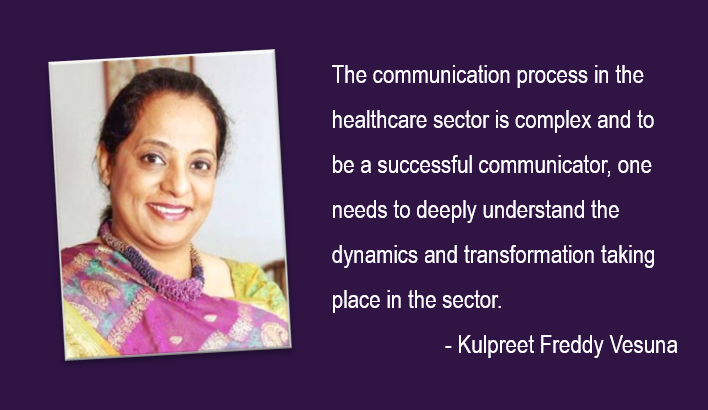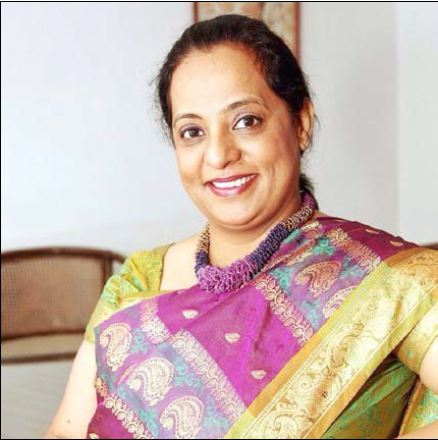Over the years, growth in healthcare sector is truly staggering. The Indian healthcare sector is undergoing major transformation across all levels. Expansion of the continuum of care, rising patient consumerism, a paradigm shift towards quality-based care, increasing patient participation, the use of technology and introduction of mega insurance scheme are some of the disruptive trends which the Indian healthcare sector is currently witnessing. As the sector adopts new components of people, process and technology in its delivery systems, the role of communicators becomes very important in terms of making all stakeholders aware about the change and thereby outcomes.
Rapid advancement due to adoption of new technologies offers big opportunities. Bringing Availability, Accessibility, Affordability and Quality to the forefront are equally important tasks where communicators play a critical role. As opportunities come with challenges such as trust deficit in the sector, which is unnerving the sector. Trust deficit surfaces in the forms of complaints against overcharging, unethical practices and attack on doctors. Hence, both internal and external communications in the healthcare domain can be extremely challenging as compared to the other sectors. The difference between rural and urban indicators of health status and the wide interstate disparity in health status are also well known. As communicators, we bring in the right approach to deal with the dynamic situation with transparency and accountability. Thus, the role of communication has become progressively more important for the entire healthcare ecosystem.
Let us talk about the art and science behind healthcare communication:
Collaborations
The vulnerability of the healthcare sectors demands different teams to work together to maintain singular messaging. The roles of marketing department, corporate communicators, HR departments need to move beyond functioning in silos. We, as communicators, ensure all stakeholders are mapped, heard and then we move to our messaging table.
Expanding roles
The importance of talking the same language and creating synergies between internal and external communication has become the most crucial component in the healthcare set-up. With the increasing penetration of the social media, everyone is a newsmaker and in the ever-changing media dynamics, communicators hone and innovate storytelling skills and apply that to the new-age media.
Identifying the core issue
Our role is not only about communicating the right message but first is to identify the reason why we are communicating and for what. Our focus is on the change we want to achieve. A whole lot of research and analysis goes into identifying the issues of this dynamic sector. The common thread of issue in the healthcare sector is trust deficit.
Challenges and approach
The major challenge is building trust between the consumers and the providers of healthcare services. It is important that we, as communicators, use a variety of mediums to disseminate unified messages. Today as I see, many consumers have lack of trust on the private or public sector hospitals due to quality or cost issue. Communicators help maintain the transparency.
Creating awareness
There are various treatments and adoption of newer technologies/disruptions in healthcare sector, which need to reach the consumers. As there is a lack of awareness of advanced techniques amongst the patients/consumers, public relation plays a vital role. For making PR campaigns effective in healthcare industry, it is very important to identify the purpose in society. This enables us to create a distinct & unique messaging, cutting through the content clutter and standing out as trustworthy and credible.
Help in crisis
The major role of communicators comes in handy when a crisis strikes. Unlike other sectors, healthcare is quite prone to crisis especially in the providers segment. Though there is no set formula to handle a crisis and approach may differ on case-to-case basis, however, having a crisis plan in place helps in addressing unforeseen crisis. We, as experts, first understand the nature and scope of crisis. Real-time monitoring of the development across media helps in creating short-term and long-term goals.
In nutshell, the communication process in healthcare is a complex phenomenon and to be a successful communicator, we need to deeply understand the dynamics of the sector. As the sector undergoes a transformation, we, as communicators, are also redefining our role, responsibilities and approach to deal with it efficiently and effectively.
The views expressed here are that of the author and do not necessarily reflect that of Reputation Today.





Be the first to comment on "Art & science behind healthcare communication"